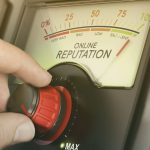What would you say if someone asked you to name three Apple products?
The iPhone. The MacBook. AirPods. Easy, right?
Now, do the same for MSI.
Laptops? Yeah. Just two more. Go on.
If you’re stumped, don’t worry. Plenty of people can’t name the last two products. The reason? We don’t know either, but a brand tracking study can tell you all about it.
Brand tracking analyzes customer data to explain a brand’s positioning in the market and measure how well people recognize this name in the market.
It’s the key to unlocking stronger brand value, better customer perceptions, and deeper market penetration.
Let’s dive deep into the idea of brand tracking and outline the steps to create a brand tracking survey from scratch.
What is Brand Tracking?
Brand tracking is the continuous analysis of business and customer-focused data to measure a brand’s market performance over time. This can include feedback forms, online survey tools, consumer panels, competitor comparisons, or a combination of all four.
Think of it as a global scorecard where you assign yourself points in categories such as:
- Brand awareness, brand preference, and recall
- Market perception
- Product usage
- Purchasing frequency and intent
- Product/Brand associations
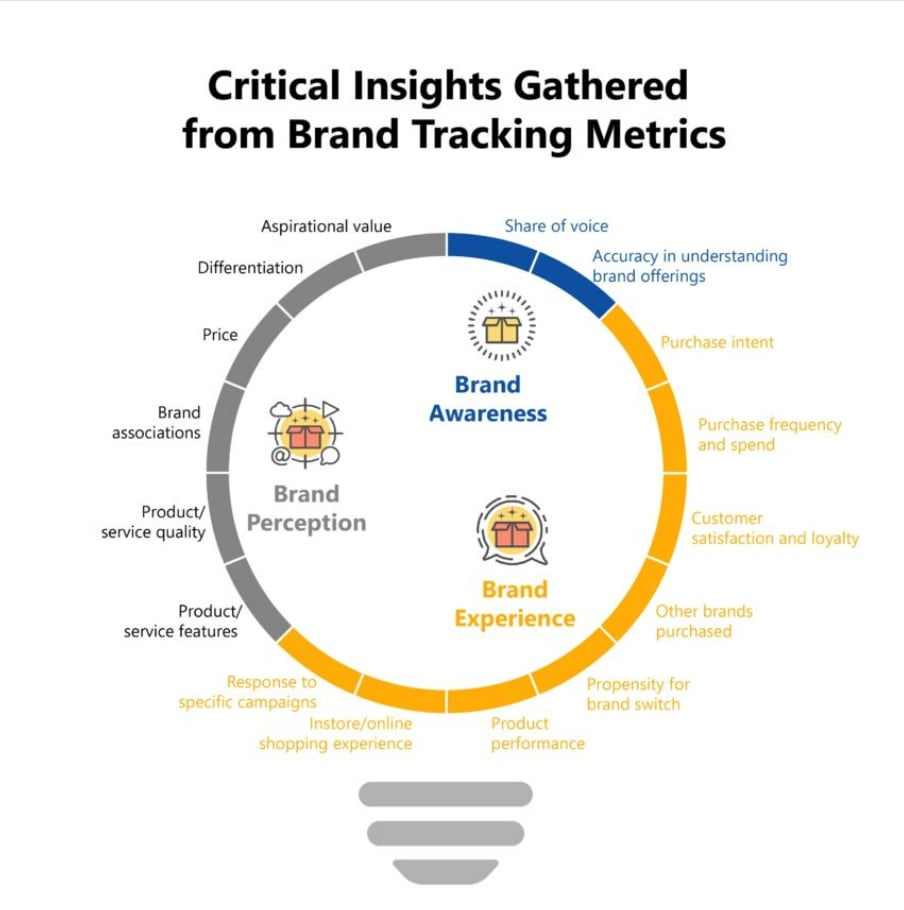
Your assessment parameters in a brand tracking study will depend entirely on your key objectives.
For example, let’s say a shoe retailer wants to determine the ROI of recent ad campaigns. They can evaluate metrics directly related to brand equity, such as:
- Any changes in brand consideration and market image
- Improvement in perceived product quality and customer acquisition
The results would allow the company to make strategic adjustments for future marketing campaigns. And that’s the defining characteristic of brand tracking.
Brand tracking gives you real-time and long-term insights to execute successful marketing campaigns, increase your market share, and put strong numbers on the board.
Why You Need a Brand Tracking System
A Salesforce report states that 70% of consumers base their purchasing decisions on a brand’s community involvement. Another 78% look at a company’s environmental practices before making purchases.
Put simply, customers consider brand values to be important. A dedicated brand tracking system can help you identify:
- What those values are
- Why they resonate with particular groups
Aside from that, here are a few other ways in which a survey can help you:
Boost brand performance with easy access to insights: Brand health combines several factors such as market performance, customer perception, brand reputation, etc.
A tracking study provides information about precisely these aspects, allowing you to streamline your marketing tactics and improve your performance.
Stay ahead of competitors and find new territories: Brand tracking will tell you where exactly you stand in relation to your competitors and the current marketplace.
Regular monitoring can also help with product differentiation, pinpoint existing market gaps, find growth opportunities in organic search, and identify purchasing intent.
Access expert advice for flexible brand guidance: Whether you use a custom-built or a syndicated brand tracker, these studies are designed by experts to assess specific KPIs. The results and the collected information can help shape an airtight brand strategy.
Analyze trends to shape your brand’s future: Brand tracking systems collect data over time. This means detailed accounts of past, present, and incoming consumer trends/product experiences/purchasing habits.
All of this lets you stay on top of potential market challenges and fast-track your company’s growth.
Enhance the overall customer experience: A well-executed brand tracking study will tell you how consumers experience your products/services, point to areas of improvement and potential automation opportunities using AI.
Incorporating these insights into your overall strategy can foster stronger customer relationships and solidify your market position.
While these are all appealing reasons to set up your brand tracking system, two things should be noted.
First, the data has to come from clean, accurate channels. Second, monitoring efforts must be consistent and present information collected over time.
How to Conduct a Brand Tracking Survey from Scratch
Conducting a brand tracking survey can seem intimidating if you’re new to it or just getting back into the groove of things. So, here’s a step-by-step guide on how you can measure brand loyalty without too much effort.
Outline Your Objectives & Audience
A common mistake most companies make with brand tracking research is to have several unrelated objectives. This only increases the volume of data you have to analyze while not giving you clarity on any particular goal.
So, if you’re new to such systems or wish to have detailed insights into your brand health, you should:
- Choose realistic and measurable outcomes using the SMART model
- Limit yourself to 1-2 brand objectives for each study
- Identify contextual success factors and isolate other non-essential elements
- Assess priority areas that are vital to brand growth in the next 4-5 years
- Narrow your focus to specific audience segments
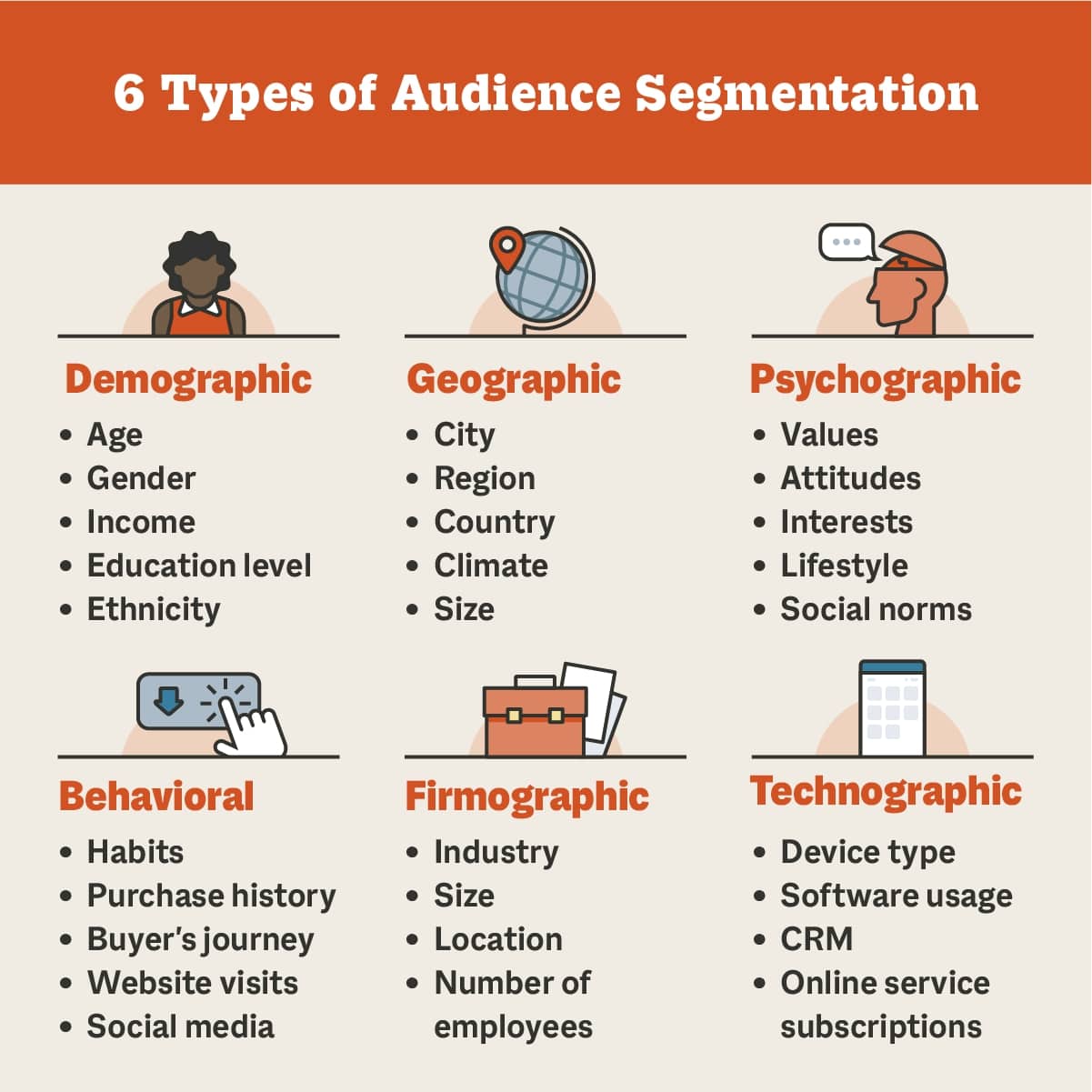
To put this in context, let’s say you want to measure campaign impact on brand health and perceived product quality. In this case, you are:
- Focused on 2 objectives (analyzing brand recall and perceived product quality)
- Evaluating brand equity (contextual success factors) / Not sales (non-essential)
- Prioritizing key growth areas that will shape your future market position
- Drawing data from new customers (audience segment based on purchase history)
It’s crucial not to jump into the deep end right from the beginning. Understand your objectives, what they involve, and, most importantly, why they matter.
Determine Survey Frequency & Timelines
The more frequently you conduct brand tracking, the better off you’ll be.
There are also exceptions to this rule. For instance, if you’re measuring the market impact of quarterly advertisement runs, you’d be better off with a bi-yearly analysis that groups two campaigns together.
That way, you can create scored surveys for a comparative assessment and determine what customers liked in each set. Then, the resulting data can inform future promotional plans.
Regardless, there are two broad directions you can go here.
Continuous/high-frequency tracking (weekly, monthly, quarterly): This is better suited for monitoring long-term brand health and helps smoothen out short-term market and advertising disruptions. It’s also great for incorporating global data points (sales, market share, etc) into your tracking process.
Pulse/low-frequency tracking (bi-yearly or as needed): This method is oriented towards particular initiatives/campaigns. It is usually less expensive and helpful in providing ‘before-during-after’ assessments of specific media events.
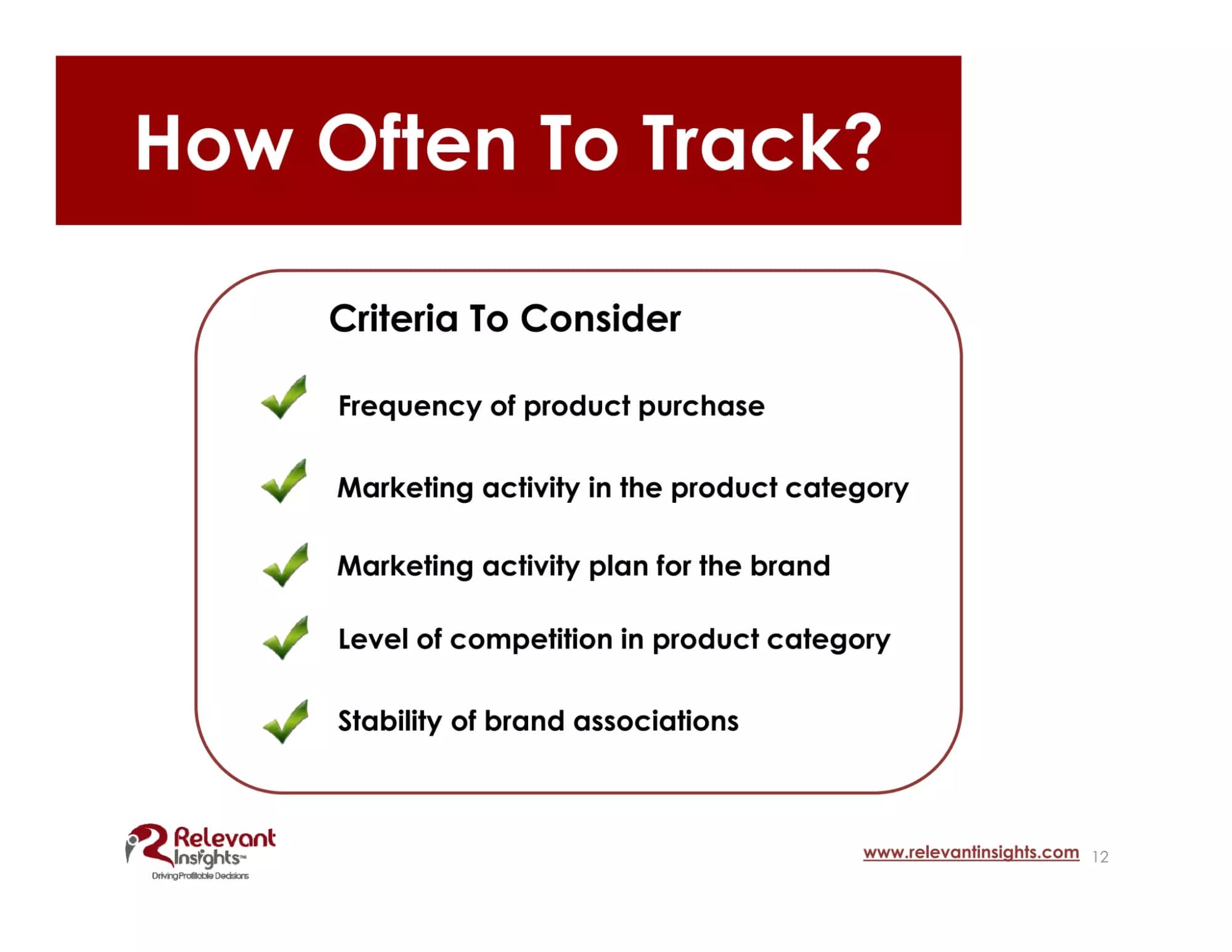
In short, go for continuous tracking when measuring your overall brand health. For isolated events, campaigns or e-commerce advertisements, you may want to consider pulse surveys.
Choose Your Data Collections Methods
Surveys are one of the most common channels used for brand tracking. However, you can also try out other brand tracking methods, like setting up a chatbot and adding popups to monitor the user experience on your brand’s website.
Not just that, you can also use these channels to collect firsthand data:
- Host consumer panels to learn friction points for specific audience segments
- Run social listening analytics to gauge customer satisfaction/experience/brand perception
- Compare quarterly profit margins to assess changes in perceived product quality
- Schedule emails in bulk to send feedback forms or review requests en masse
- Conduct market research on customer retention rates to measure brand loyalty
- Organize interviews and focus groups to understand product differentiators
When it comes down to it, your data points and collection methods will depend entirely on your established objectives. That is why it’s critical to streamline your goals as they directly affect the volume and the quality of the key brand tracking metrics you want to collect.
Identify Key Metrics to Track
All brand tracking metrics can be segmented into four categories:
- Perceptual: What people think of your brand/the attributes they associate with it
- Behavioral: How customers interact and engage with your brand
- Purchase: How people buy/use your products and services
- Financial: The overall impact of your brand on your bottom line
To be effective, brand tracking studies should draw from all the above-mentioned categories and include a combination of elements such as:
- Brand Awareness: How aware consumers are of the existence of your brand
- Brand Attributes: Product/service characteristics that influence brand perceptions
- Brand Usage: How often and on which occasions customers use your products
- Purchasing Intent: The likelihood of customers buying your products in the future
- Net Promoter Score: Likelihood of customers recommending your brand to others
Now, brand awareness and attributes fall under ‘Perceptual’. Brand usage is directly linked to ‘Behavioral.’ Purchasing intent is obvious as it is, while net promoter score is under the ‘Financial’ category.
But, we get it: consolidating all of this can become a little overwhelming. That’s where a versatile brand tracking tool like Mention comes in handy.
Mention helps you analyze data pulled directly from over 1 billion sources daily. You can:
- Track emerging industry trends and topics across digital channels in real-time
- Draw from 2 years of backlogs to assess past and current brand trajectories
- Monitor specific keyword usage and web page visits through assisted queries
- Consolidate data from multiple social media platforms to gauge audience sentiment
- Plan and post social media content based on the derived insights
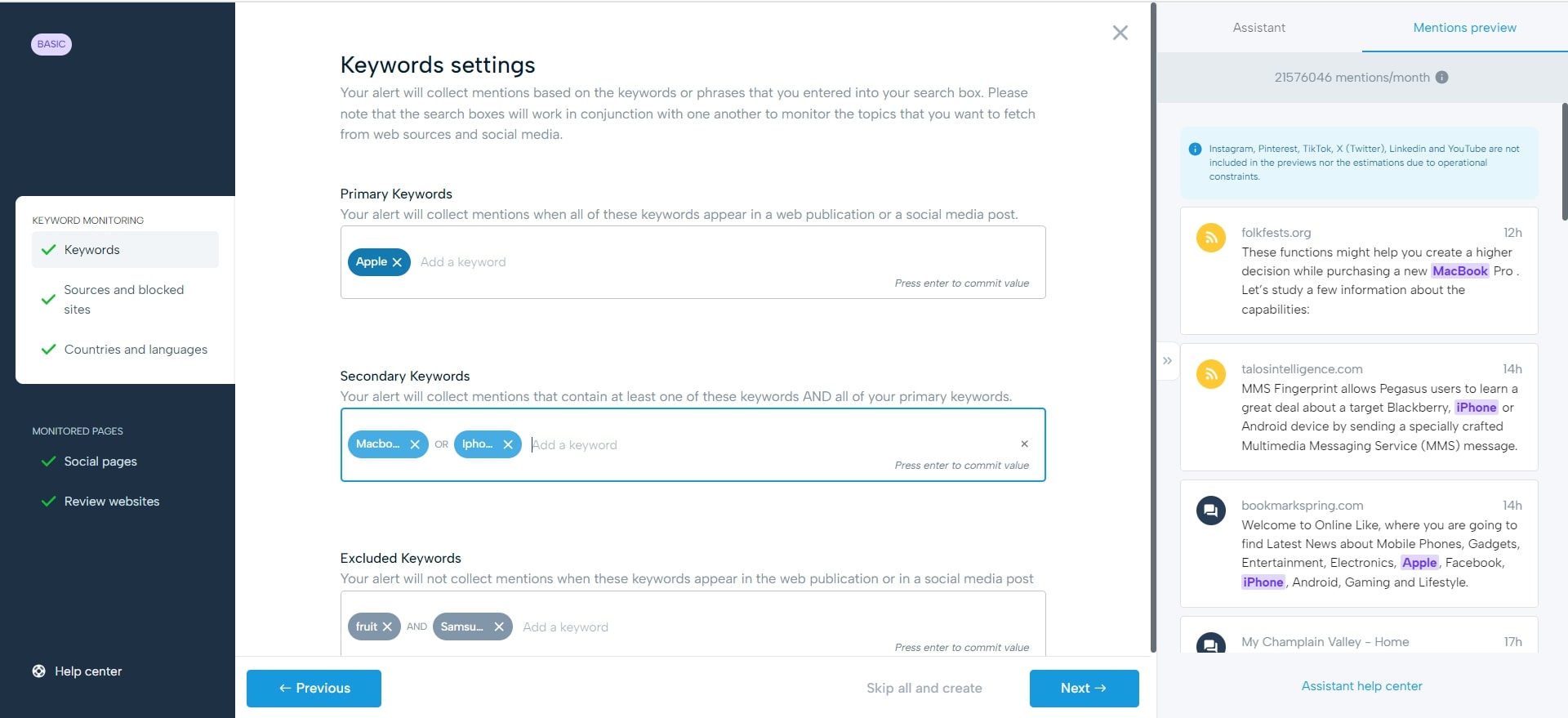
Consistency is key when it comes to brand tracking. And channeling your monitoring efforts through one dedicated tool is the first step to achieving precisely that.
Finalizing Questions & Survey Design
You have your objectives, assessment frequency/timelines, and data collection points. You’ve even identified which KPIs to focus on.
Now, it’s only a matter of reviewing and finalizing the questions for your survey. The catch? There’s no standardized way of doing this. All you can do is rely on context.
So, keep in mind these best practices for designing a brand tracking survey:
- Keep your questions goal-oriented and avoid unnecessary deviations
- Prioritize formats that are easy to engage with (questionnaires, short reviews, etc.)
- Automate outreach to reach a broader audience and increase data intake
- Be mindful of entrenched customer biases when designing the questions
It also helps to add easy-to-understand questions and open-ended description requests. You can even ask respondents to describe your brand in one word.
The more freedom you give to people, the more engaged they will be in the study. That, by itself, will improve the quality of the data you receive.
Analyze & Optimize Based on Results
What you do with your tracking results will depend on how you process them.
For instance, two companies that have conducted studies on brand and customer loyalty in the same time frames will have completely distinctive strategies to improve these parameters.
The outcome or success will depend on:
- How effectively do you implement the strategy
- How aligned it is with industry practices
- The quality and scope of your data
And that’s partly the issue. There’s no way to standardize the success of company-specific strategies or assign them individual scores based on industry alignment.
In short, successful optimization of brand tracking efforts will differ from company to company, industry to industry. In some cases, it may even change on a day-to-day basis.
What we can do is help with the quality and scope of the collected data.
So, for example, if point-based feedback forms paint an inaccurate picture of your perceived product/brand quality, you can switch to open-ended questionnaires or use reviews for better insights
Here are a few other helpful tips for analyzing brand tracking survey results:
- Modify tracking frequencies and timelines to reduce/increase data volume
- Switch your data collection points to gain more comprehensive insights
- Re-evaluate primary objectives to align with new market developments
- Prioritize one information category over another (business over consumer and vice-versa)
The bottom line: adaptability is key. After all, your brand elements are constantly evolving based on shifting market trends, and there’s no reason the brand tracking research process shouldn’t follow suit.
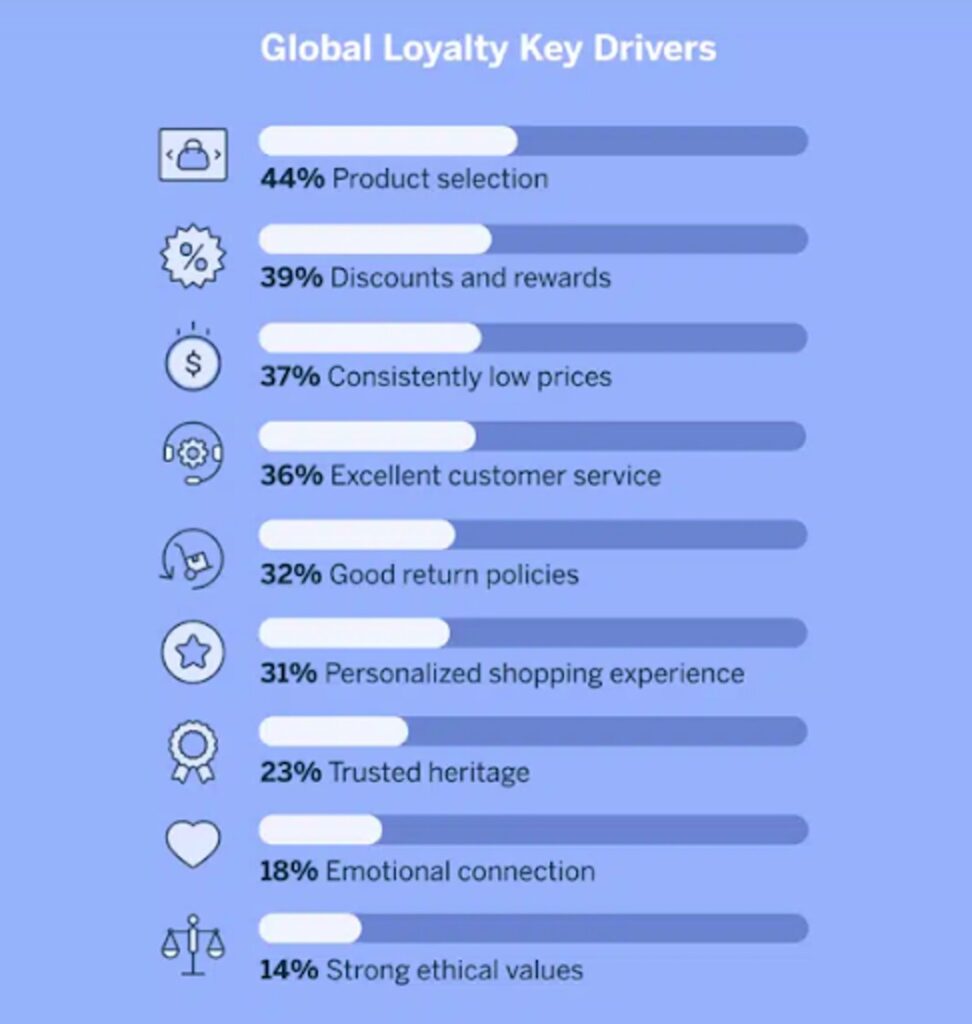
10 Sample Brand Tracking Questions for Every Brand
Even though context and specificity are crucial to every brand tracking campaign, a few general points work well across all studies. Below, we’ve listed 10 choice-based and open-ended questions you can include in your next brand tracking survey:
Question 1: Which of the following products (if any) have you purchased in the past 6- 12 months?
- Product from Brand A
- Product from Brand B
- Product from Brand C
Question 2: On a scale of 1-10 (with 10 being definitive), how likely are you to recommend Brand X to others?
Question 3: What are 3 words you would use to describe Brand X to friends and family?
Question 4: Where do you buy Brand X’s products/services from?
Question 5: How would you rate Brand X on the following attributes on a 1-10 scale (with 10 being exceptional)?
- Attribute 1
- Attribute 2
- Attribute 3
Question 6: If you had to choose, what are some of your preferred alternatives to Brand X?
Question 7: How often do you buy products from Brand X?
Question 8: What was your last experience with Brand X like?
Question 9: What price point would you be uncomfortable with for Product XYZ?
- $
- $$
- $$$
Question 10: Have you had any negative experiences with Brand X?
Launch Your Brand Tracking Efforts Today!
Setting definitive objectives, assigning survey frequency, determining accurate collection methods and designating core metrics are all important steps in your brand tracking efforts.
However, it is equally critical to identify engaging formats, finalize easy-to-understand questions, and re-evaluate your tracking process to adapt to new information.
Of course, it can get a little too much at times. But that’s where brand tracking tools like Mention step in.
With Mention, you can track, analyze, and act on everything. Real-time social media insights? Check. Dedicated filters to monitor specific keyword usage and audience sentiment? That’s there too.
In fact, anything you need to ensure your brand health, Mention can deliver. But don’t just take our word for it. Book a demo and see for yourself!




